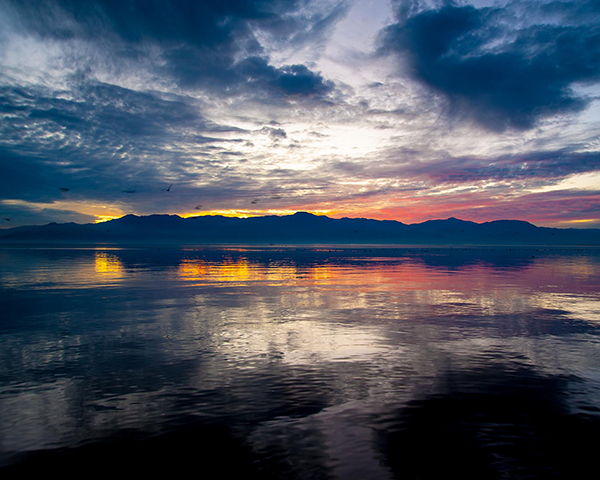- You Are Here:
- Home
- About Us
- Regional Issues
- Salton Sea
Salton Sea
Coachella Valley Water District is a founding member of the Salton Sea Authority. Two CVWD board members concurrently serve on the Salton Sea Authority board. The District has been a part of efforts to restore the Salton Sea for decades. The Coachella Valley Water District supports a practical, reasonable solution to what is a complex environmental challenge at the Salton Sea.
History
The Salton Sea was created between 1905-07, as Colorado River floodwaters collapsed Imperial Valley irrigation facilities and poured for 18 months into an area known previously as the Salton Sink. The area’s elevation is the 2nd lowest in the United States, surpassed only by Death Valley.
History
The Salton Sea was created between 1905-07, as Colorado River floodwaters collapsed Imperial Valley irrigation facilities and poured for 18 months into an area known previously as the Salton Sink. The area’s elevation is the 2nd lowest in the United States, surpassed only by Death Valley.

Scientists predicted the desert's intense heat would
completely evaporate the sea in 8 to 14 years. But agricultural drainage
of more than one million acre-feet a year – mostly from Imperial County
farms, and to a lesser extent from the Coachella and Mexicali valleys –
have sustained the Salton Sea for decades. The sea, 34 miles long and
between 9 and 10 miles wide, was designated an irrigation drainage
repository in 1928.
In the decades that followed it became a popular recreation area: well stocked with marine fishes and among the most visited tourist attractions in California. As the largest body of water entirely within the state, it has become a crucial stop for migratory birds seeking food along the Pacific Flyway.
Concerns about the sea’s future began to surface in the 1960s as a variety of factors contributed to significant drops in its popularity as a recreation destination. Regional urbanization in recent decades has reduced the amount of agricultural drainage to the sea, resulting in a receding of its shoreline. Because the Sea is fed by farm drainage and has no outlet, as water evaporates it leaves the salts behind. As a result, the sea is now saltier than typical ocean water.
In the decades that followed it became a popular recreation area: well stocked with marine fishes and among the most visited tourist attractions in California. As the largest body of water entirely within the state, it has become a crucial stop for migratory birds seeking food along the Pacific Flyway.
Concerns about the sea’s future began to surface in the 1960s as a variety of factors contributed to significant drops in its popularity as a recreation destination. Regional urbanization in recent decades has reduced the amount of agricultural drainage to the sea, resulting in a receding of its shoreline. Because the Sea is fed by farm drainage and has no outlet, as water evaporates it leaves the salts behind. As a result, the sea is now saltier than typical ocean water.
